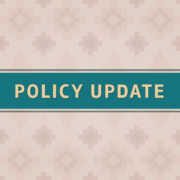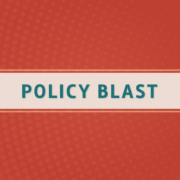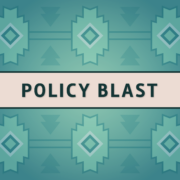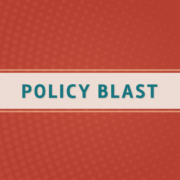NCUIH FY22 IHS URBAN INDIAN HEALTH BUDGET ANALYSIS
NCUIH FY22 IHS Urban Indian Health Budget Analysis
The President’s request includes nearly 60% increase for urban Indian health and endorses the NCUIH UIO facilities fix.
WASHINGTON, DC (June 16, 2021) – Recently, on May 28, 2021, President Biden released the detailed annual budget proposal for Fiscal Year (FY) 2022. The proposal includes a total of $131.7 billion for the Department of Health and Human Services (HHS), which represents a nearly 23.5% increase to current enacted budget for FY21. The request includes $8.5 billion for the Indian Health Service (IHS), a $2.2 billion increase from FY21 and $100 million for urban Indian health, a nearly 60% increase. The request also endorses NCUIH’s priority fix for allowing urban Indian organizations to use existing IHS funding for facilities improvement and renovations.
The Tribal Budget Formulation Workgroup (TBFWG) requested the Administration to fund IHS at $12.759 billion with an urban Indian health line item of $200.5 million for FY22. These suggested increases were formulated to counteract failed Indian healthcare policies and to fulfill the federal trust obligations to all AI/ANs in the administration of healthcare to American Indian/Alaska Native (AI/AN) populations.
The Budget includes the following legislative proposals:
- Exempt the IHS from discretionary sequester
- Authorize Urban Indian Organizations to use their resources for facilities activities
- Provide the IHS full discretionary use of Title 38 hiring authorities
The additional $2.2 billion requested for IHS will go towards promoting health equity for American Indians/Alaska Natives (AI/ANs) and include Urban Indian Organization (UIO) confer to evaluate options, including mandatory funding, to provide adequate, stable, and predictable funding for IHS in the future. The proposal also includes an advanced appropriation for IHS in FY23 to ensure a more predictable funding stream. NCUIH has long advocated for advanced appropriations for IHS to begin closing the funding disparities that have long hindered Indian Health Care Providers.
NCUIH looks forward to working with the Administration and Congress to fully fund IHS and the urban Indian Health line item. Congress will consider the President’s request as it begins to draft appropriations bills for FY 2022. The House Appropriations Committee will markup its bill on June 28, 2021.
Please find below a summary of some of the proposed funding amounts that would impact urban Indian health.
URBAN INDIAN LINE ITEM
- The spending proposal recommends a funding level for the urban Indian Health line item at $100 million. This is an approximately $38 million increase from the FY 2021 enacted amount of $62 million, but it is approximately $100.5 million below the TBFWG FY22 recommendation of $200.5 million.
IHS
The President’s Budget for fiscal year 2022 includes a total discretionary budget authority of $8.5 billion, which is $2.2 billion or 36 percent above the enacted FY 2021 funding level.
This includes four accounts:
- Services: $5.7 billion
- Facilities: $1.5 billion
- Contract Support Costs: $1.1 billion .
- Remains an indefinite discretionary appropriation for fully funding CSC
- Payments for Tribal Leases: $150 million
- Remains an indefinite discretionary appropriation for fully funding the cost of section 105(l) leases
- Contract Support Costs and Payments for Tribal Leases are proposed to shift to mandatory funding in FY 2023.
SERVICES AND FACILITIES
Funding Increases (Services & Facilities)
- $207 million to fully fund Current Services
- Offsets increasing costs due to pay, inflation, and population growth
- $125 million for staffing and operating costs of newly-constructed healthcare facilities
Funding Increases (Hospitals and Health Clinics)
- $190 million for a general program increase
- $22 million for the Hepatitis C and HIV Initiative ($27 million total)
- $20 million for the National Community Health Aide Program ($25 million total)
- $27 million to offset the rising cost of HHS-wide assessments for information technology, human resources, financial management, and other activities
FACILITIES MAINTENANCE AND IMPROVEMENT
- The President’s FY22 requested discretionary budget for Facilities Maintenance and Improvement is $222,924,000. This is a $53,952,0000 increase over the FY21 Enacted amount but remains $256,050,000 below the TBFWG requested of $478,974,000.Advanced Appropriations
- Under advance appropriations, the IHS would request funding in two phases, comparable to the Veteran’s Health Administration. The first phase would address the amount necessary to maintain the current level of services and fully fund known costs, like staffing of new facilities. This amount that would be included for FY 2023 in the FY 2022 President’s Budget and appropriation. In the second phase, the FY 2023 President’s Budget would address policy proposals that reflect input from Tribal and Urban Indian Organization leaders, as well as the Administration’s goals. While advance appropriations would provide the IHS funding for both FY 2022 and FY 2023, the funding for FY 2023 would not “score” against the discretionary funding caps until it became available in FY 2023.
SPECIAL DIABETES PROGRAM FOR INDIANS (SDPI)
- Diabetes and its complications are major contributors to death and disability in nearly every Tribal community. AI/AN adults have the highest age-adjusted rate of diagnosed diabetes (14.7 percent) among all racial and ethnic groups in the United States, more than twice the rate of the non-Hispanic white population (7.5 percent).[1] In some AI/AN communities, more than half of adults 45 to 74 years of age have diagnosed diabetes, with prevalence rates reaching as high as 60 percent.[2]
- The President’s budget also includes continued funding for the SDPI at $147 million. This is $3 million less than the enacted FY21 amount and $13 million less than FY22 TBFWG request. The Consolidated Appropriations Act, 2021 (P.L. 116-260) authorized SDPI until September 30, 2023. FY 2022 would be the 25th year of the SDPI.
105(I) LEASES
- The FY 2022 budget adds $49 million for 105(l) leases for a total of $150 million. The TBFWG request of $337 million in FY 2022 for section 105(l) line item was to ensure that growing 105(l) lease costs are fully paid without impacting increases to other critical IHS line items. NCUIH opposes IHS action to unilaterally restrict ISDEAA authorities in the absence of Tribal consultation.
INDIAN HEALTH PROFESSIONS
- The need for qualified mental health providers; in particular, the TBWFG voiced the difficulty in recruiting and retaining fulltime professionals to work and adapt to Native settings. Knowing of the need to grow Indian health professionals to fill this need, the TBWFG requested a nominal increase to $82,634,000. The President’s FY22 recommendation increases IHP to $92,853,000 million. This is $25,539,000 above the FY21 enacted level and $10,219,000 million above the Tribal Budget Formulation Workgroup recommendation.
FACILITIES MAINTENANCE AND IMPROVEMENT
- Current misinterpretations have halted the overall improvements and construction of UIO facilities. NCUIH continues to advocate for a substantial infrastructure investment within the UIO health system. Allowing the continued deterioration of critical health facilities goes against the mission of the Indian Health Service and Urban Indian Organizations to provide quality healthcare to all American Indians and Alaska Natives.We hope that once this facilities restriction is lifted that an amendment can be made to the Indian Health Improvement Act to add a line item for UIOs to use funding for facilities.
- The President’s FY22 requested discretionary budget for Facilities Maintenance and Improvement is $222,924,000. This is a $53,952,0000 increase over the FY21 Enacted amount but remains $256,050,000 below the TBFWG requested of $478,974,000. “Facilities Renovation for Urban Indian Organizations to the extent Authorized for Other Government Contractors SEC. 433. The Secretary of Health and Human Services may authorize an urban Indian organization (as defined in section 4 of the Indian Health Care Improvement Act (25 U.S.C. 1603)) Provides authority for IHS to make funds available to IHS-funded Urban Indian Organizations for minor renovations to facilities or construction or expansion of facilities, including leased facilities, to the extent authorized for other government contractor”.[3]
CENTERS FOR DISEASE CONTROL AND PREVENTION AND NATIONAL INSTITUTES OF HEALTH
- The budget request would increase discretionary funding for the Centers for Disease Control and Prevention to $8.7 billion. This is a funding increase of $1.6 billion that would significantly affect the HHS core mission of preventing and controlling emerging public health issues.
[1] Centers for Disease Control and Prevention (CDC). National Diabetes Statistics Report 2020: Estimates of Diabetes and Its Burden in the United States. Atlanta, GA: U.S. Department of Health and Human Services; 2020. Available at: https://www.cdc.gov/diabetes/pdfs/data/statistics/national-diabetes-statistics-report.pdf
[2] Lee ET, Howard BV, Savage PJ, et al. Diabetes and impaired glucose tolerance in three American Indian populations aged 45-74 years: the Strong Heart Study. Diabetes Care. 1995;18:599-610







Leave a Reply
Want to join the discussion?Feel free to contribute!